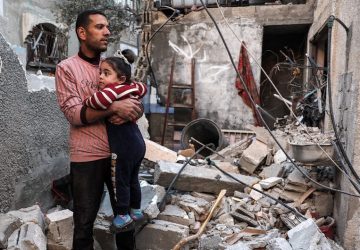Listen to the article
In 2019, Sri Lanka, the Asian island celebrated for its rich heritage and stunning landscapes, faced its most severe economic crisis since gaining its independence in 1948. What were the underlying causes, symptoms, effects, and potential solutions for this crisis?
No Smoke Without Fire
The first tragedy struck on April 21, 2019, Easter Sunday, when a series of terrorist attacks orchestrated by the Islamic State targeted three churches and three luxury hotels in the heart of Colombo, the commercial capital. The attacks resulted in the loss of 269 lives, leaving the global community in shock. The island’s tourism sector suffered a severe blow, and the financial impact deepened with the onset of the COVID-19 pandemic, as lockdowns and production halts exacerbated the economic challenges.
In November 2019, newly elected President Gotabaya Rajapaksa unveiled an ambitious agenda by deciding to implement ESG (Environmental, Social, and Governance) policies. In practice, this involves an increase in public spending (and thus debt), coupled with the introduction of new and rather harsh regulations.
Driven by a dedication to ecological values, the Rajapaksa government made the abrupt decision to forbid farmers from using chemical fertilizers, herbicides, and pesticides. This sudden move delivered a significant blow to three sectors: the farmers as such, the relevant industries, and the local population that depends on agricultural production for their sustenance.
Following a tax reduction, the government was forced to take on substantial debt from foreign countries, notably China, to fund suspicious projects, such as the Hambantota port or the Rajapaksa International Airport. Public debt exceeded 100% of the GDP in 2020. Two years later, the situation spiraled out of control, with debt reaching 86 billion dollars.
A financial abyss ensued, and the central bank, seeking to alleviate the shock caused by the authorities, resorted to extensive monetary expansion. In 2022, hundreds of billions of rupees were injected into the economy at the request of the authorities to fund the budget deficit, despite warnings from the IMF.
Sri Lankan banks held the majority of the state’s domestic debt (in local currency). Consequently, they had to endure the repercussions of a government that aspired to live beyond its means. As a result, they were compelled to significantly scale back their borrowing activities but successfully avoided bankruptcy.
The Financial Avalanche
The ecological illusion had an adverse effect. Over 85% of farmers reported crop losses. Rice production dropped by 20%, and prices soared by 50% in just six months. The country, previously self-sufficient in this vital commodity, had to import rice worth $450 million. Tea exports hit their lowest level in over two decades.
Simultaneously, official transfers from expatriates through banks plummeted by 61% in a year. Foreign workers, facing a confidence crisis, chose to transfer family support through unofficial channels at a higher parallel exchange rate, contributing to the depreciation of the rupee against the dollar. Consequently, the pressure intensified on banks as their foreign currency reserves dwindled due to the lack of incoming transfers from overseas.
Meanwhile, inflation soared to a record level of 74% in September 2022. Sri Lankans faced shortages of fuel, milk, and medicines. The rupee was devalued to boost exports for increased foreign exchange, but to no avail. Credit rating agencies responded by downgrading the country’s rating, dealing the final blow to the government’s credibility.
Between Solutions and Temporary Relief
The central bank, cornered by these developments stemming from the authorities’ public policies, made unsuccessful attempts to keep the Sri Lankan rupee anchored to the dollar. However, the national currency depreciated by 50%. Simultaneously, strict controls on the movement of capital were implemented as early as April 2020.
After depleting foreign exchange reserves and half of the gold reserves to support the rupee and repay sovereign obligations, the central bank allowed the exchange rate to float freely in early March 2022. This led to an additional 30% depreciation of the rupee. In April 2022, the government doubled interest rates to encourage savings and counter inflation.
However, all these measures proved insufficient. On April 12, 2022, the Sri Lankan government “temporarily” defaulted on its entire external debt of $51 billion, “awaiting a restructuring plan.” Following extensive negotiations, the IMF approved a $3 billion aid package in March 2023, contingent upon implementing a public austerity policy and strict financial reforms.
In October 2023, an agreement was finalized with the China Export-Import Bank, addressing $4.2 billion in overdue and unpaid debt. Subsequently, in November, the World Bank approved funding to bolster the resilience of the financial sector. A full recovery from the crisis is expected by 2026.
Yet, shortages are now a thing of the past, tourists are streaming back, capital controls have been eased, and inflation has been brought under control. After years of recklessness, authorities wisely adhered to the IMF’s recommendations without jeopardizing banks and their depositors. This is in stark contrast to other countries still entangled in disputes over who should bear the burden in lieu of the state.





